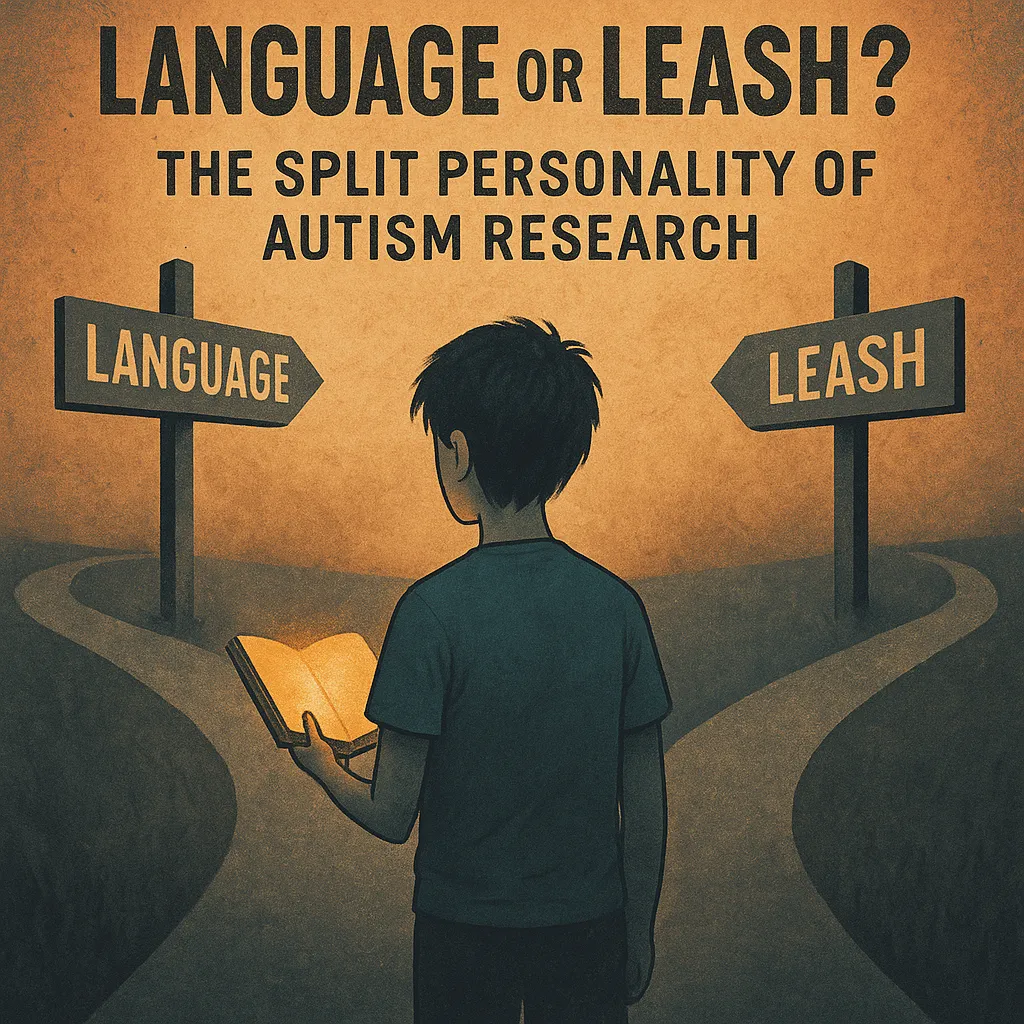Language or Leash: The Split Personality of Autism Research
 There are two kinds of autism studies making headlines today.
There are two kinds of autism studies making headlines today.
And if you’ve been paying attention, you’ll notice something jarring.
One speaks our language.
The other tightens the leash.
On one side: thoughtful researchers urging language teachers to rethink “politeness” norms for autistic students — to stop demanding eye contact and compliance as proof of understanding. These researchers are asking hard questions about cultural expectations and making space for autistic difference. They’re not perfect, but they’re listening.
On the other: another paper dusting off Applied Behavior Analysis (ABA) and calling it effective “therapy” — measuring success by how well autistic people suppress their differences. Same old compliance training dressed up in outcome metrics. It doesn’t ask how the autistic person feels. It only asks: did they act more normal?
This isn’t a disagreement about method.
It’s a fracture in values.
One side sees autism as a communication difference.
The other sees it as a behavioral problem to be corrected.
One side is talking about agency. The other about intervention.
One starts from: “How can we adapt to meet autistic people where they are?”
The other starts from: “How can we make autistic people more manageable?”
They call it science. But don’t be fooled — this is philosophy in a lab coat.
What we’re really seeing is a split in allegiance.
Who is autism research for?
That’s the real question.
Is it for the autistic person — to support autonomy, communication, and dignity?
Or is it for the parent, the teacher, the institution — to reduce disruption, increase “functionality,” and make things more comfortable for the neurotypical world?
When a study praises ABA because it reduces “problem behaviors,” ask:
Who decided what’s a problem? Who benefits when it stops?
When a study encourages language teachers to stop treating flat tone or literal phrasing as rudeness, that’s not just pedagogy — that’s respect. That’s saying: you’re not broken just because you’re different.
This is the split personality of autism research today.
It wants the right words, but not always the right goals.
It learns the language of neurodiversity while quietly reinforcing the structures of control.
A paper might drop “disorder” and replace it with “condition.” It might stop saying “high-functioning” and start saying “support needs.” But if the metric of success is still compliance, if the outcome is still behavior normalization, then all we’ve got is a leash made of softer rope.
We don't want better manners. We want better mirrors.
Autistic people don’t need research that studies how well we mimic neurotypicals.
We need research that understands how we think, how we thrive, and what freedom actually looks like for us.
The paper on social language in English classrooms?
It’s not revolutionary. But it’s a step in the right direction. It assumes autistic people are already whole, already capable of connection — just not always in the way others expect.
Read it here.
The paper on ABA?
It assumes we’re raw material to be shaped. It centers adult control, not autistic selfhood. It’s compliance engineering with a smile.
Read it here.
And this matters. Because research becomes policy. And policy becomes power.
What gets measured gets funded.
What gets normalized gets scaled.
What gets published becomes precedent.
So when we see this split — between language and leash, respect and restraint — we can’t afford to stay neutral.
To researchers: choose your side.
You can’t speak the language of dignity and still reinforce the goals of suppression.
You don’t get to praise inclusion while measuring success in obedience.
If you want to help autistic people, then start by asking us what help looks like.
Start by listening. Start by letting go of the leash.
Shoutout to Starbreaker, whose refusal to sanitize this conversation reminds us that not every truth fits inside a peer-reviewed paragraph.